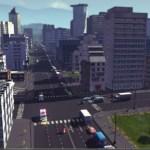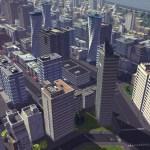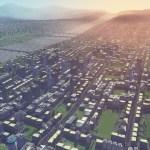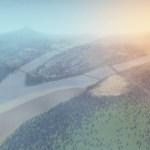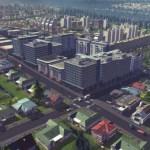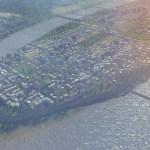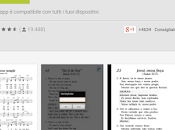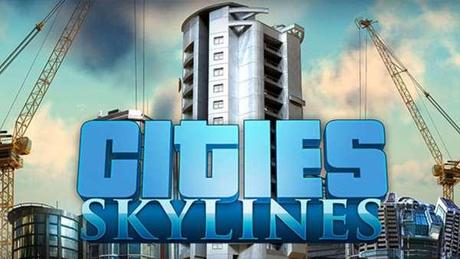
Cities: Skylines arriverà tra non molto su Pc ed arricchirà il panorama dei gestionali-strategici del ramo city-builder per Windows, Mac e Linux.
Noi de IlVideogioco.com, incuriositi da questo progetto firmato Colossal Order e Paradox, abbiamo così contattato Karoliina Korppoo, lead designer di Colossal Order ed abbiamo parlato di quello che sarà Cities: Skylines e di quello che potrà proporre questo nuovo antagonista di SimCity.
Abbiamo conosciuto meglio chi sta dietro questo titolo che promette la gestione di città grandi e varie con un editor avanzato che permetterà diverse opzioni e di molto altro.
Vediamo, quindi, quello che sarà Cities: Skylines che, certamente prende spunto dalla serie SimCity ma che si avvicinerà ad altre dinamiche. Nondimeno ricordiamo un passaggio un cui la Korppoo parla del fatto che il gruppo si sia ispirato più al vecchio SimCity 2000 che al nuovo e questo perché gli autori vogliono dare un gameplay profondo e non casual. Abbiamo parlato dei contenuti, della grandezza delle città, delle caratteristiche dell’editor e di altro.
Buona lettura (ha collaborato Fabio Cecco D’Ortona)KKoKk
Presentatevi ai lettori, chi siete, quali sono le vostre esperienze nell’industria videoludica. Com’è composto il vostro team?
Sono Karoliina Korppoo, Lead Designer di Cities: Skylines. Sono entrata nel mondo dei videogiochi come tester di giochi mobile sette anni fa e da allora ho lavorato su diversi progetti ricoprendo diversi ruoli. Sono una graphic designer esperta, ma da circa quattro anni mi occupo di game design. Qui a Colossal Order siamo un piccolo gruppo di lavoro composto da 13 persone, ma ognuno dà il 100% per il progetto facendo del nostro meglio e supportandoci a vicenda.
Cosa vi affascina dei city builder?
È un genere interessante. Non sono dei “veri giochi”, nel senso che ci sono soprattutto obiettivi scelti dal giocatore e il sistema di gioco appare come quello di un sandbox per chi vuole prenderne parte. Trovo questo molto affascinante. Fare un buon videogioco sandbox è molto diverso dal crearne uno, sempre buono, ma lineare. I primi, per così dire, hanno bisogno della presenza di “bei giocattoli” per garantire il divertimento a chi lo gioca. E ci sono infiniti modi per giocarli, alcuni forse più efficienti di altri, ma chi lo affronta riesce a crearsi sempre il proprio spazio, le sue sfide e città.
Qual è stata la vostra sfida più grande nello sviluppo?
Mi sento di dire il giusto livello di sfida. Un sandbox per essere interessante ha bisogno che sia un po’ difficile, ma non così tanto portando a grandi sforzi per ogni piccola cosa. Il titolo si rivolge a videogiocatori con diverse abilità, in modo da avere un grado di sfida accettabile per tutti coloro che potrebbero trovarlo difficile. Quello che abbiamo fatto è stato pensare ad un sistema di sblocco che facilita il giocatore nelle fasi di gioco. Quando si inizia a giocare, non si hanno tutti gli strumenti a disposizione. Dalla crescita della città al raggiungimento dei traguardi di popolazione, molti strumenti sono bloccati. Sembra naturale, un piccolo villaggio non ha bisogno di un dipartimento di polizia o di un ospedale, ma man mano che cresce, questi diventano disponibili e i cittadini iniziano a sentire il bisogno di quei servizi. Per un giocatore esperto sbloccare tutti questi tool è semplice e veloce, ma uno meno esperto può cimentarsi prima con una piccola città ed una manciata di strumenti a sua disposizione, quindi espandersi una volta afferrate le peculiarità e come giocare. E ovviamente c’è anche una opzione che permette di sbloccare tutto e subito, quindi non è obbligatorio passare sempre per la stessa procedura di sblocco.
Quale sarà la cosa migliore nel gameplay del vostro gioco?
Voglio dire il traffico! Abbiamo un sacco di esperienza su come funziona il traffico nei giochi e quali sono le maniere migliori per simularlo. Abbiamo commesso degli errori coi precedenti videogiochi ma abbiamo imparato molto. Io stessa sono sempre affascinata dalla costruzione delle strade e di vedere come si sviluppano i flussi di traffico. La sua gestione è come una sorta di puzzle game interno, perché ci sono tanti tipi di strade, politiche e svariate opzioni per influenzarlo. A parte il traffico direi che la cosa migliore è la grande mappa che permette molta creatività quando si costruisce una città.
Diteci delle differenze rispetto a SimCity e agli altri concorrenti.
Le principali differenze riguardano la modalità single-player offline e la grandezza della mappa. L’ultimo SimCity è piuttosto casual e noi abbiamo tratto ispirazione dai vecchi titoli, come SimCity 2000, più hardcore. Per hardcore non intendo complicato, ma piuttosto che il gioco ha la profondità a cui i giocatori sono interessati. Abbiamo voluto fare un titolo in cui quasi chiunque può creare la propria città e gestirla, ma per le persone a cui piace ottimizzare ogni aspetto ci sono un sacco di caratteristiche che offrono ciò e che non sono indispensabili. Tali feature, come regolare le tasse con differenti politiche, sono divertenti ed offrono alcuni modi in più per rendere la vostra città molto funzionale, ma i giocatori con meno esperienza potranno giocare ore ed ore senza toccare aspetti come le politiche da attuare, se è qualcosa che non ispira il loro interesse.
Questo slideshow richiede JavaScript.
Ci saranno architetture futuristiche?
Abbiamo una linea guida su quali possibili elementi sci-fi includere nel gioco. Quindi sì, ci saranno anche fantasiosi edifici futuristici!
Quali stili architettonici saranno presenti?
Tutte le zone edificate partono con l’essere piuttosto piccole e mondane. Salendo di livello grazie ai buoni servizi e al valore del terreno, le costruzioni diventano più elaborate e più grandi. Lo stile architettonico è generico per consentire alla città di essere immaginata in più regioni. Speriamo di poter aggiungere stili particolareggiati in seguito.
E quali mezzi?
Abbiamo una selezione carina di auto e scooter per i cittadini, e le materie prime sono trasportate da diversi tipi di camion. Ci sono anche autobus, treni, navi e aeroplani che si muovono in città.
Le partite inizieranno dal passato, oppure si inizierà direttamente dal presente?
Il gioco parte nei giorni nostri e procede nel futuro. Ci sono diverse costruzioni futuristiche, come una centrale elettrica a fusione e un ascensore spaziale, che potranno essere acquisiti molto avanti nel gioco.
Le mappe saranno collegate tra loro come tante città di una regione o piuttosto saranno quartieri all’interno di una megalopoli?
Si gioca dentro una sola mappa, ma le merci, i turisti e le materie prime possono essere spedite dalla tua città verso l’esterno. Questo aiuta a bilanciare il gioco, quindi ad esempio si può andare a corto di risorse naturali. Nella città più efficiente, con il più alto reddito fiscale, si dovrebbe produrre tutto all’interno, ma non c’è nulla di male nell’avere meno denaro per utilizzare fonti esterne. Le aree industriali e commerciali ordinano materie prime e merci in maniera autonoma, se necessario da location esterne qualora non siano disponibili in città.
Le città singole quanto potranno essere grandi?
Sono enormi! Abbiamo un sistema di sblocco per le sezioni della mappa che consente di iniziare all’interno di un’area ridotta dove la costruzione di una piccola città è naturale. Mentre la città cresce, si potrà acquistare ulteriore terreno. Ci sono 25 sezioni in ogni mappa e il giocatore può posserderne nove in una sessione di gioco. Ognuna di queste aree ha attributi diversi, alcune hanno risorse naturali ed altre offrono passaggi alle navi o altri collegamenti esterni, questo significa che anche quando si gioca nella stessa mappa ci sono diverse maniere per costruire la città, ed ognuna di queste può apparire molto diversa. Non è necessario avere una superficie quadrata, le sezioni possono essere collegate tra di loro anche da un solo lato, quindi le aree di costruzione possono essere lunghe, strette o perfino a forma di L!
Quanti tipi di edifici ci saranno?
Ci sono edifici a zona, o più semplicemente zone già edificate, ed edifici piazzati dal giocatore. I primi sono quelli che costruiscono i cittadini, come abitazioni ed aziende, che fanno parte della città. I secondi offrono servizi agli edifici della zona. Per esempio ospedali, siti di discarica e i cimiteri.
Il gameplay si concentrerà più sulla gestione delle risorse economiche, delle vie di comunicazione o sull’ambiente?
Il nucleo del gameplay è quello di offrire scelte significative ai giocatori quando si prendono cura della loro città. Scegliere come affrontare l’impatto ambientale è una di queste cose. La gestione delle tasse e dei servizi per incassare denaro è un’altra, e osservare ciò di cui i cittadini hanno bisogno, scegliendo se e come esaudire i loro desideri, è un altro ancora.
L’editor sarà user-friendly o complesso da utilizzare?
Il gioco avrà un editior degli asset e un editor per la mappa. Con quest’ultimo ognuno può creare mappe da giocare e da condividere. L’editor degli asset serve per importare costruzioni proprie ed altri oggetti, ma può anche essere usato per creare intersezioni stradali o parchi da usare nel gioco. Personalmente amo fare le intersezioni, perché mi piace giocare col traffico e piazzarne una è molto più bello che costruire un edificio pezzo per pezzo. Una volta che si è nel gioco e si è piazzata l’intersezione, può essere modificata liberamente proprio come se fosse stata inserita pezzo per pezzo. I tratti stradali possono essere aggiornati, in meglio o in peggio, aggiunti o rimossi, in modo da poter sfruttare al meglio gli incroci per adattarli alla città. Inoltre, il gioco può essere moddato editando dei file, come ad esempio scrivere nuove regole sui prezzi delle costruzioni, ma entrambi gli editor sono abbastanza semplici e pensati per tutti gli utenti.
Qual è la feature migliore di questo editor, potremo ricreare le nostre città?
L’editor degli asset. Mi piace giocare con i disegni delle intersezioni stradali e salvarli per un uso successivo. Anche fare parchi è molto divertente e mi permette di evitare il posizionamento di troppi parchi dello stesso tipo, che apparirebbe noioso.
E riguardo le specifiche hardware che richiede Cities Skylines?
I requisiti di sistema finali saranno rivelati presto e saranno consultabili sulla pagina Steam del gioco prima del rilascio.
ENGLISH VERSION
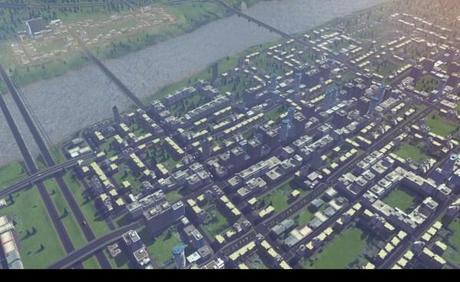
Please, introduce yourself to our readers. Who are you? How to get into the games industry and what are your experiences? How is made up your team?
I’m Karoliina Korppoo, the lead designer on Cities: Skylines. I started out in the games industry as a mobile game tester seven years ago, and have been working on different projects in different roles ever since. I’m a trained graphic designer, but been working on game design for about four years now. At Colossal Order we have small team of 13 people, but everyone gives a 100% to the project, so we can all do what we are best at and support each other.
What fascinates you about the city-building game?
City builders are an interesting genre. They are not very game-like, meaning that there are mainly goals chosen by the player, and the game system is mainly a sandbox for the player to play in. I find this very fascinating. Making a good sandbox game is very different from making a good linear game. Sandboxes, so to say need to have nice toys in them for the player to enjoy themselves. There are endless ways to play, some perhaps more efficient than others, but the player always gets to create their own space, their own challenges, their own city.
What has been the biggest challenge during the development?
I’d say finding the right level of challenge. For a sandbox to be interesting, it needs to be a little challenging, but not so much that it takes a lot of effort to get anything done. The game is aimed for players of various skill levels, so having enough challenge for all is hard. What we did was an unlocking system that eases the player into the game. When you start to play, you don’t have all of the tools at your disposal. By growing the city and reaching population milestones more tools are unlocked. It feels quite natural, like a tiny village does not need a police department or a hospital, but as it grows, these become available and the citizens start to need their services. For an experienced player, unlocking all the tools is quite easy and fast. A less experienced player can first get the hang of the game in a smaller city with a few tools and then expand once they grasp how to play the game. And there’s naturally an unlock all option too, so it’s not mandatory to always go through the unlocking steps.
What will be the best gameplay feature of your game?
I want to say traffic! We have lots of experience on how traffic in games works and what are good ways to simulate it. We have made mistakes with the previous games but have learned a lot. I myself am always fascinated with building roads and seeing how the traffic flows. Managing the traffic is sort of a puzzle game in itself, because there are many roads types, policies and other options to affect traffic. Aside from traffic I’d say the best thing is the very large map size which allows for much creativity when building a city.
Tell us about the differences of your game compared to SimCity and other competitors.
The main differences would be offline single player play and map size. The newest SimCity is quite casual, and we are drawing our inspiration from older titles, like SimCity 2000, that are more hardcore. By hardcore I don’t mean complicated, but rather that the game has depth for players who are interested in it. We have aimed to make a game where almost anyone can create their own city and manage it, but for people who like to optimize their city, there’s lots of features that offer finer optimization but are not necessary. These features, like tweaking taxes with different policies, are fun and offer some extra ways to make your city very optimized, but the less experienced player can play for hours and hours without ever touching the policies, it that’s not something that interests them.
Will there be any futuristic buildings?
We have a guideline on including “feasible sci-fi” into the game. So yes, there re very fancy futuristic buildings too!
What architectural styles will be offered?
All zoned buildings start out as quite small and mundane. As they level up due to good services and high land value, the buildings become fancier and larger. The architectural style is generic to allow the cities to be imagined in multiple regions. We hope to add specific styles later on.
And what kind of vehicles?
We have a nice selection of different cars and scooters for the citizens, and raw materials are carried by different types of trucks. There are also buses, trains, ships and airplanes moving in the city.
The matches will start from the past or will start directly from the present days?
The game starts in present day and proceeds into the future. There are some very futuristic buildings, like a fusion power plant and a space elevator, that’s can be acquired very late in the game.
The maps are linked between them as more cities in a portion of territory or we have to do our “job” in quarters fit in megalopolis?
You play only one map, but goods, tourists and raw materials can be shipped into your city from outside. This helps balance out the game, so you cannot for example run out of a natural resource. For the most optimal city that has highest tax income, you should produce everything inside the city, but there’s no harm other than a little less money if you use the outside sources. Industries and commercial areas order raw materials and good automatically from outside locations if there are none available in the city.
What can you say about the size of the cities?
They are huge! We have a system of unlocking map tiles, which allows you to start out in a nice small area where building a small city is natural. As your city grows, you can buy more land. There are 25 tiles in each map and the player can own nine of those in one game session. Since map tiles have different attributes, like some have natural resources and others offer ship routes or other outside connections, this means that even when playing the same map, there are many ways to build your city and each city can be very different. You don’t have have a square area, the tiles just need to be connected from one side, so there can be long, narrow cities or even L shaped cities!
How many types of buildings will be there?
There are zoned buildings and player placed buildings. Zoned buildings are things that citizens build, like homes and companies, that the city then caters to. The player placed buildings offer services to the zoned buildings. For example hospitals, landfill sites and graveyards are player placed buildings.
The gameplay will focus more on the management of the economic resources, on the communication routes or on the environment?
The core of the gameplay is to offer meaningful choices for the players to make when taking care of their city. Choosing how environmentally friendly you want to be is one thing. Managing taxes and services to bring in money is another, and just observing what the citizens need and choosing if and how to give it to them is yet another.
The editor will be user-friendly or complex to use?
The game ships with an asset editor and a map editor. With the map editor anyone can make maps to play or share. The asset editor is for importing self made buildings and other items, but can also be used to make placeable intersections or parks to be used in-game. I personally love making intersections, because I like playing with the traffic and placing an intersection is much nicer than building each one piece by piece. Once you are in the game and place an intersection, it can be freely modified just like it would have been placed piece by piece. Road sections can be upgraded, downgraded, added or removed, so you can make the most of the intersection and make it fit your city. In addition the game can be modded by editing files, like for example writing new rules on how prices for buildings are counted, but the editors are fairly straightforward and meant for all users.
What is the best editor feature, in your opinion?
The asset editor. I like playing around with intersection designs and saving them for later use. Making parks is fun too, and lets me avoid having to place many parks of the same type, which would look boring.
Could we create everything in the city?
Almost! Visually it is possible to replace building models with new ones, or you can add new ones to be used with the ones already in the game. Mods allow for new rules, so you can make an extra hard mode or just adjust for example hospitals prices or how taxation works. We are using the Unity engine, so we have to choose what parts of the game to expose for modding, but I feel we have done a good job at selecting which features will benefit the most from skilled modding.
What can you say about the hardware specs for Cities Skylines?
